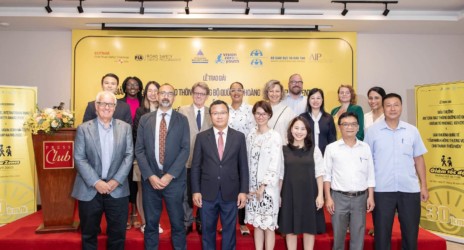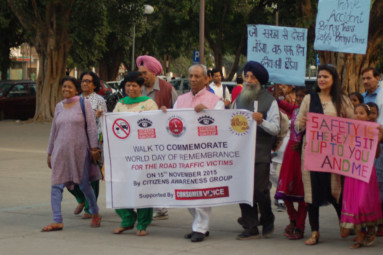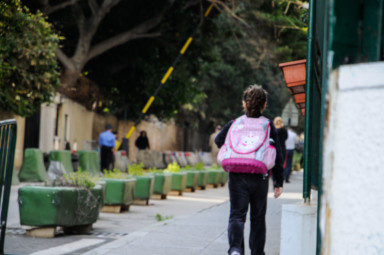Red Cross Red Crescent sees road crisis a ‘silent disaster’
It happens every day: Red Cross and Red Crescent volunteers saving the lives of people who fall victim to road crashes. Khin Khin Shein, who heads the First Aid and Safety Services Division for the Myanmar Red Cross Society tells of a recent first-hand experience when a delegation from Japan visited a rural Myanmar township on an evaluation mission.
“We came across a lady woman lying on the road,” Shein said. “She had been left there for nearly 45 minutes and nobody was taking care of her because no body knew first aid. When we arrived, we were able to provide proper first aid.”
Some time later, an ambulance arrived and the woman survived.
This fairly typical story not only illustrates the importance of knowing first aid techniques—it highlights the role that Red Cross and Red Crescent Societies play in preventing deaths on the world’s roadways. And with 14 Red Cross Red Crescent representatives attending the 5th Annual Global Road Safety Partnership Asia Road Safety Seminar, it is clear evidence that the Red Cross Red Crescent is expanding its road safety repertoire and awareness.
 “The Red Cross Red Crescent sees road safety as a ‘silent disaster’ that is a combined humanitarian and developmental issue,” said Anne E. Leclerc, head of the South East Asia regional office for the International Federation of Red Cross and Red Crescent Societies, which hosts the Partnership, and is one of the world’s largest humanitarian organizations. “We are particularly concerned about the numbers of young people who are dying on the roads.”
“The Red Cross Red Crescent sees road safety as a ‘silent disaster’ that is a combined humanitarian and developmental issue,” said Anne E. Leclerc, head of the South East Asia regional office for the International Federation of Red Cross and Red Crescent Societies, which hosts the Partnership, and is one of the world’s largest humanitarian organizations. “We are particularly concerned about the numbers of young people who are dying on the roads.”
Delivering a keynote speech during the seminar’s opening ceremony, Leclerc said there is the growing recognition that no single humanitarian organization or government agency can tackle road safety on its own.
“The Global Road Safety Partnership’s ‘trinity approach’ combines the best of expertise and capacity from government, business and civil society,” she told the gathering. “This has really helped blaze a trail that has concentrated competence and influence to contribute to heightened safety on the region’s roads.”
Meanwhile, she explains that more Red Cross and Red Crescent Societies are conducting road safety activities. The Red Cross Societies of Cambodia and Nepal, for example, both work with young people through school-based projects. The Timor-Leste Red Cross Society also links with youth to promote simple messages on crossing roads safety, and the Indonesian Red Cross Society works in communities to raise awareness on safer road use. Meanwhile, in Myanmar and Viet Nam, the Red Cross provides first aid in communities as well as along national highways.
For the 14 National Societies present, including Shein and the Myanmar Red Cross, the Asia Seminar offered an opportunity to share experience and learn from leading experts and practitioners. It presented new ideas on effective ways to improve its road safety prevention efforts in places such as Myanmar. Says Shein: “Road safety is very new to us, our country is now making its first steps.”






